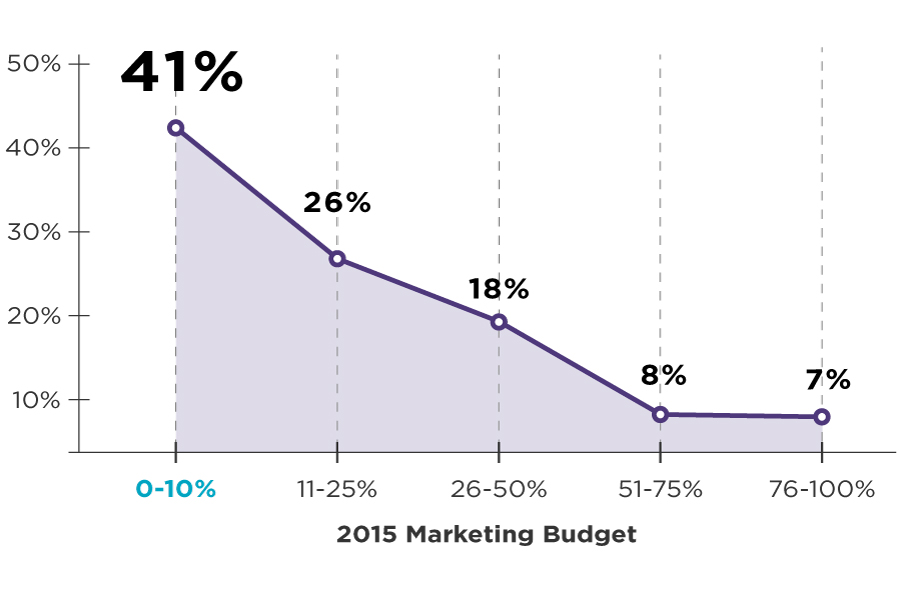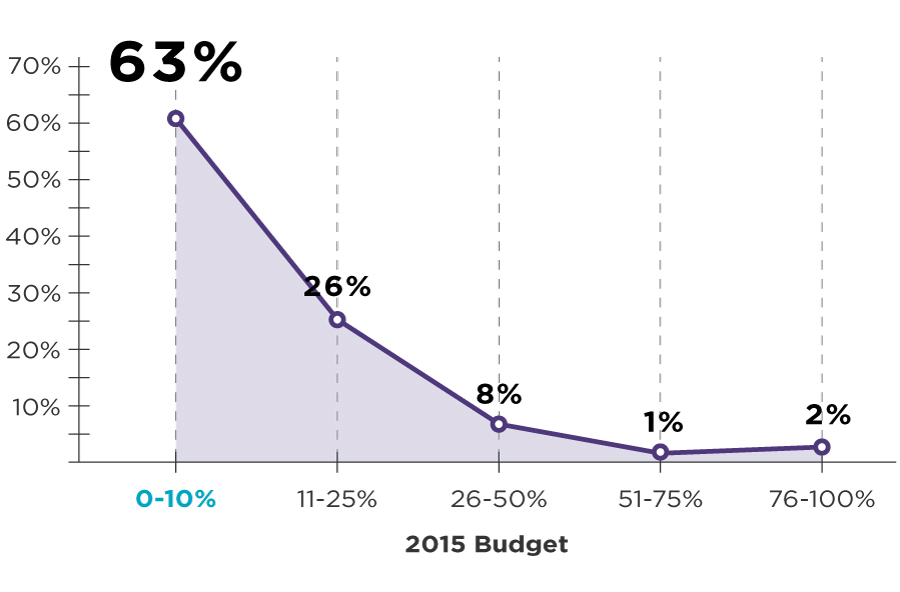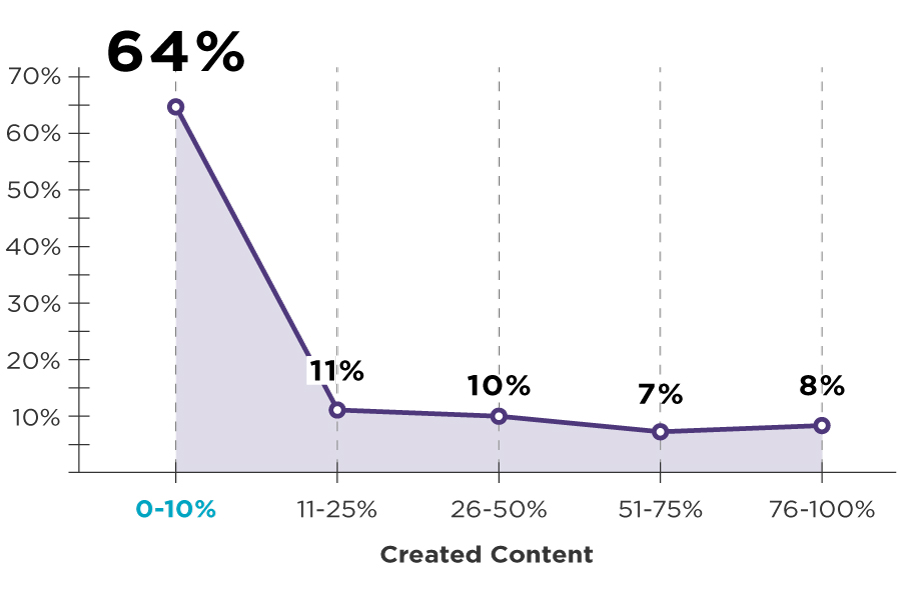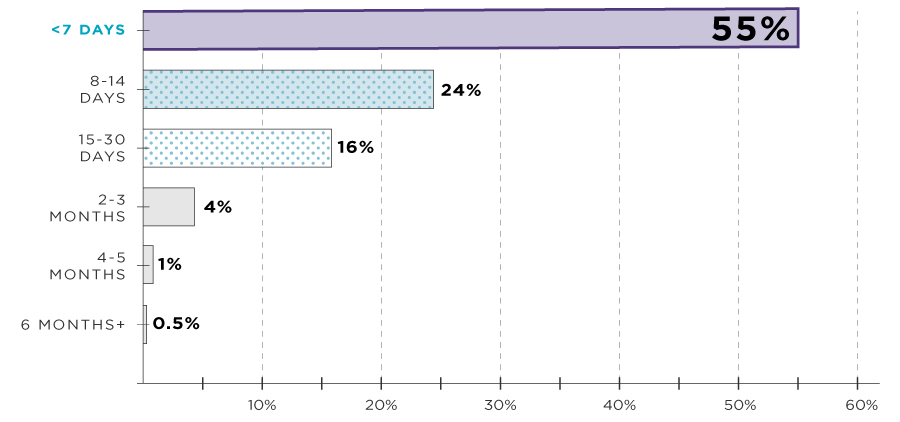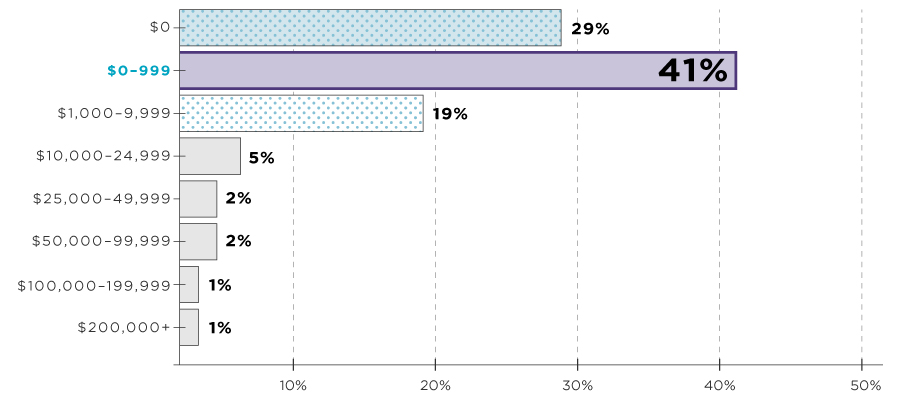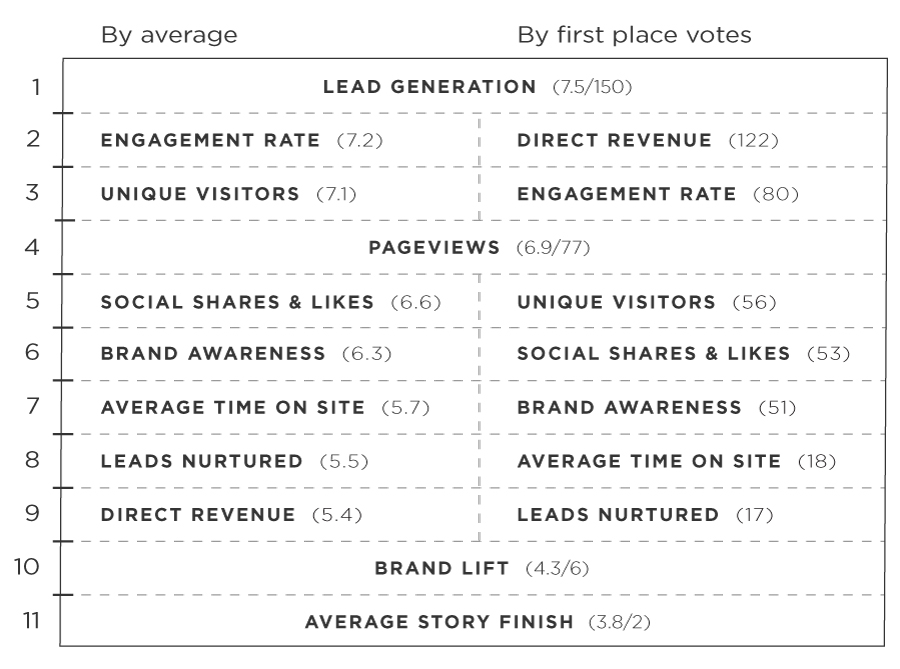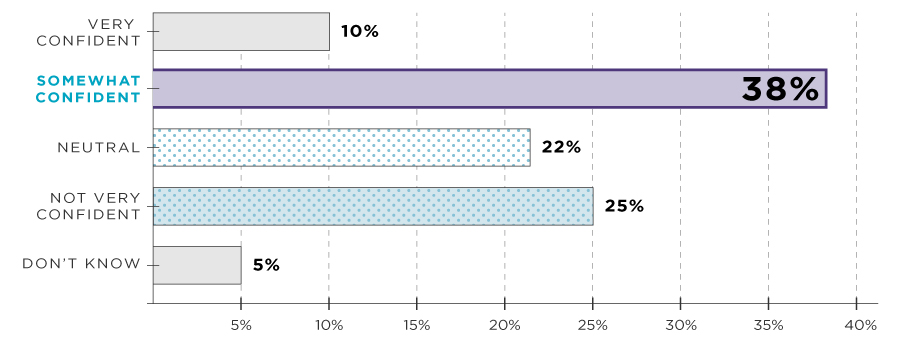Content Marketing 2016: Staffing, Measurement, and Effectiveness Across the Industry
Table of Contents:
Introduction
I: Methodology
II: Key Findings
III: Research and Analysis
Conclusion
Brands aren’t just publishing blogs anymore—they’re navigating all of the opportunities and challenges that come with being a fully formed media company.
If 2014 was the year of the “brand blog,” then 2015 was the year of the “brand as media company.”
Red Bull has long been the strongest example of this mentality, developing a nuanced content studio that employs hundreds of people and produces high-quality movies, music, live broadcasts, original photography, and even a respected print magazine. But in 2015, a number of other companies like General Electric, Marriott, and Starbucks joined the club, competing with and, in some cases, outclassing what we expect from traditional media outlets.
(Full disclosure: GE and Marriott are Contently clients.)
It may seem odd at first to liken companies known for energy drinks or dishwashers to legacy media giants like Comcast, Condé Nast, and Viacom. But brands have started to get more sophisticated with their content efforts, building out cohesive strategies that combine creative talent, distribution, and content and marketing technology into a seamless process.
Constantly making those pieces fit together remains a challenge for any company, no matter its size or budget. Nonetheless, in 2015, the content marketing industry truly started to mature. You could say brands today are like angsty teenagers: Everyone desperately wants to be popular, some are comfortable conforming to the latest trends, and the ones with the best reputations aren’t afraid to take risks and stand out.
As we looked ahead to 2016, Contently asked today’s content marketers about their biggest issues, hurdles, and goals. How are they dealing with compliance and workflows to publish content quicker? What paid distribution platforms are most effective? What metrics are most important for measuring success? How does marketing technology influence an organization’s content output?
Here’s what they had to say.
Methodology
Between November 24 and December 2, we surveyed 632 marketers with an online survey of 25 questions. Thirty-one percent identified as B2B marketers, 18 percent identified as B2C marketers, while another 49 percent work across B2B and B2C businesses.
Key Findings
1. 73 percent of marketers created more content in 2015 than they did in 2014.
2. Lead conversion (32 percent) is the most popular metric for measuring content marketing success, followed by social shares and likes (19 percent) and pageviews (15 percent).
3. 49 percent of marketers rate their content as somewhat or very effective.
4. 67 percent of respondents devoted less than a quarter of their marketing budgets to content, and 63 percent devoted less than one-tenth of their marketing budgets to content marketing technology.
5. 43 percent of companies have at least two full-time employees dedicated to content marketing, and 64 percent of marketers are creating 90 percent or more of their content in-house.
6. Email was selected as the most effective organic distribution channel, while Facebook was the most effective paid distribution channel.
7. 30 percent of respondents still don’t have a tool or platform that provides data on their content.
Results and Analysis
To start, we asked people to rate the overall effectiveness of their content. While 49 percent believe their content is effective, that still leaves more than half of respondents who ranked their work as average, not very effective, or not at all effective.
Would spending more money help? Is it a question of allocating existing budgets differently? As we dig deeper into the data, we analyze why marketers aren’t creating more effective content, as well as what they can do to improve their overall outlook for the future.
Rate the effectiveness of your content marketing in 2015 on a scale of 1 to 5:
Infrastructure
Money isn’t the only factor influencing content effectiveness, but it’s probably the most important. A healthy investment in content gives marketers the freedom to take creative risks and invest in more expensive mediums like infographics and video.
In 2015, 67 percent of respondents devotedh less than a quarter of their marketing budgets to content, indicating that investment in content remains a hurdle for some marketers. This stat reveals just how much room publishers have to grow.
Odds are, they will. According to PQ Media’s “Global Content Marketing Forecast 2015–2019,” the content marketing industry is supposed to spend more than $300 billion by 2019, more than double the 2014 mark of $145 billion.
What percentage of your 2015 marketing budget is devoted to content?
No matter how you spin it, producing high-quality content is expensive. However, 89 percent of marketers devoted less than a quarter of their budgets to content marketing technology, including 63 percent who set aside less than one-tenth of their budgets for content marketing tech.
This is another huge area for growth, since the right tools can help companies maximize their efficiency and limit costs. Over the last few years, a number of content marketing technology companies have emerged with smart products that offer features like approval workflows, email automation, analytics platforms, and customer relationship management (CRM) integrations. According to Forbes’s new “Publish or Perish” CMO report, content marketing technology can reduce the cost of a content marketing program by up to 65 percent.
What percentage of your 2015 budget has gone to content marketing technology?
Technology will only get you so far if you don’t have the right talent. Companies interested in experimenting with content marketing sometimes make the mistake of only hiring one person to run an entire operation. On The Content Strategist, Melissa Lafsky recently made the case for why brands need at least three main hires to be set up for success: one person focused on strategy, another to handle execution, and a third to deal with integrating content into the rest of the company.
According to the study, just over half of companies have at least two full-time employees dedicated to content marketing, which is encouraging. A little over 2 percent of respondents even claimed to have at least 25 full-time employees working on content across the enterprise, à la Marriott and GE. While most companies don’t have the budget to hire dozens of people, many publishers have succeeded with a model that lets a handful of full-time marketers collaborate with a roster of reliable freelancers.
How many full-time employees do you have committed solely to content marketing?
In 2015, a majority of brands produced more content than they did in 2014. But just because the output increased doesn’t mean quality—or effectiveness— followed suit.
Among the 73 percent of respondents who created more content in 2015, a large chunk—46 percent—still listed their content as average or ineffective.
To address low levels of perceived effectiveness, several companies made a concerted effort in 2015 to rethink how much they publish. Perhaps because of the diminishing returns that come with churning out short blog posts, some brands switched their attention from a high level of production to distribution, making sure their existing content was able to reach a wide audience. That dance of quality and quantity will vary depending on the situation, but there seems to be a general standard that publishing about once per day is an effective way to grow an audience.
As Danny Wong pointed out in a TCS e-book on content marketing in B2B tech, even major brands like Microsoft and Intel have thrived by concentrating on longform content and publishing fewer stories.
How much content are you creating this year compared to last year?
Since only 43 percent of companies have two full-time employees dedicated to content marketing, one might expect respondents to rely on freelancers to pick up the slack. Surprisingly, 64 percent said that less than a tenth of their content is created by freelancers. For marketers who are already handling a lot of responsibilities and have to get the most out of limited resources, hiring talented part-time contributors can be a sound, cost-effective way to increase productivity.
Finding the right talent does take time, and one possible takeaway is that respondents don’t know where to source the best freelancers. However, putting in the work to team up with talented creative people is crucial whether you’re a Fortune 500 machine or a lean startup. On The Content Strategist and The Freelancer, for example, freelance writers and illustrators create about 65 percent of what we publish, allowing our in-house team to focus on big projects.
What percentage of your content is created by freelancers, as opposed to in-house staff?
For brands looking to stay relevant with their content marketing, publishing quickly is key. Fifty-five percent of respondents claimed that, on average, they can publish a piece of content in less than a week. An additional 24 percent can do it in under two weeks, nearly identical responses to last year’s report.
On average, how long does it take to create, approve, and publish a piece of content?
Everyone wants more money. But it turns out that content marketers want something else even more: time. Last year, only 11 percent of respondents cited time as their biggest challenge. This year, that number jumped to 37 percent. Meanwhile, only 13 percent said budget was their biggest challenge. Strategy, at 19 percent, was a more popular answer than budget constraints.
Many of these factors feed into each other. A bigger budget can lead to more time if you’re able to hire more full-time content staff and invest in technology that increases your efficiency. The right strategy can drive more internal support, which, in turn, makes it easier to garner greater investment. Still, the fact that time was explicitly specified as a top priority suggests an issue with (wo)manpower. For the right price, hiring more full-time employees and freelancers could fuel better business results.
When it comes to creating effective content, what is your biggest challenge?
Distribution
Content distribution has arguably been the most important media topic of 2015. As people increasingly discover stories “sideways” through email and social media, brands and publishers alike have had to adjust their approach.
Almost a third of respondents spend more than $1,000 on paid distribution per month—a mark that should rise in 2016. For now, 41 percent allocate up to $1,000 per month, which suggests that marketers understand the value of paid distribution but are still experimenting with different options.
How much do you spend per month on paid content distribution (Outbrain, Taboola, Facebook Ads, etc.)?
Diving into specific channels for both paid and organic distribution, a few noteworthy trends stood out. First, Facebook and email were clearly the most important channels for both categories. Email topped Facebook as the most effective organic channel, and Facebook nudged email for the top spot among paid channels.
Facebook’s paid distribution dominance shouldn’t come as much of a surprise—it attracts 1.5 billion users every month and offers an affordable cost per click (CPC) that can get as low as 10 cents. Its organic effectiveness is a bit more interesting, since Facebook restricted the average organic reach for brands in 2014 to 2 percent. (That is, only 2 percent of a brand’s Facebook fans will see an organic post.) Still, many brands have more fans on Facebook than on any other social network, and Facebook’s video platform has become immensely popular over the past 18 months.
However, email, which occasionally gets forgotten in the shadow of the big social networks, is almost as dominant now that publishers of all sizes are sending out newsletters to offset falling homepage traffic.
In a bit of an upset, Twitter conquered LinkedIn in both paid and organic categories, even though, by our analysis, LinkedIn is a more worthwhile channel for B2B marketers. For paid distribution, this may come down to cost. Twitter’s average CPC hovers around $1, while LinkedIn is a more premium service, offering better capabilities but for $5 or $6 per click.
The more visual platforms like Instagram and Pinterest fell near the bottom of both lists, but that could change quickly. eMarketer expects more brands to be on Instagram than Twitter by 2017. These platforms, along with Snapchat, aren’t as useful for marketers yet compared to other channels, but that’s likely due to how new they are, as opposed to their potential effectiveness.
Taboola, the content recommendation service, ranked last in both organic and paid distribution. Last month, it drove more than 1 billion clicks worldwide, but there’s concern that those clicks don’t translate to high-quality engagement. The respondents seem to share this concern, as do the company’s investors, who recently downgraded the company’s valuation.
Content Measurement
Regardless of how creative or ambitious a project seems, marketers always have to come back to the almighty question: Does this strategy actually work?
When respondents were asked to identify the one metric they use the most to measure the success of their content, the most popular answer, at 32 percent, was lead conversions and sales. Next came social shares and likes (19 percent), followed by pageviews (15 percent).
What one metric do you use the most to measure the success of your content?
It’s reassuring that leads and sales, two elements that tie directly to revenue, were the most valued metrics, but it is perplexing that vanity metrics like pageviews and social shares were the second- and third-most popular answers, respectively. In 2014, Chartbeat found no correlation between social shares and whether or not people read a story.
It’s not that measurements like social shares don’t have value—it’s just tough to use them as barometers for progress since they’re so difficult to predict. In the past few years, there’s instead been a public push for more sophisticated engagement analytics like attention time and finish rate.
These responses could signal a new model for how marketers think about analytics in relation to ROI. When evaluating content, they’ll probably look at a blend of data to get the full picture of what’s working and what’s not, weighting audience-building or conversion metrics more heavily depending on their content goals.
To get more granular with metrics, we followed up by asking respondents to rank the effectiveness of their metrics (similar to what they did with distribution channels). The answers were somewhat consistent, but there were a few notable distinctions.
While leads and sales were deemed the most popular method for measuring content effectiveness, direct revenue was surprisingly chosen as the one of the least important metrics—third to last—in terms of metric effectiveness.
Rank the following metrics in order of importance to your company
The caveat? Respondents were split, either ranking direct revenue as the most or least important metric as an indicator of content success. It had the second-most first-place votes (122, only trailing lead gen) as well as the most last-place votes (178, or 22 more than the next closest answer, average story finish).
What is causing this anomaly? It’s possible that direct revenue only becomes important to companies that reach a certain point of maturity. For those still trying to establish themselves in the content marketing industry, building an audience could be a more important (or attainable) goal, which would make engagement metrics more valuable. In addition, direct revenue is often easier to attribute for B2B marketers than for B2C marketers.
How often do you evaluate the effectiveness of your content marketing and tweak your strategy accordingly?
When you get in a routine of creating content, it’s easy to forget about the time you need to spend reflecting on successes and failures. Regardless of how talented you are as a writer, editor, or marketer, you’re going to struggle to achieve measurable goals if you ignore data without thinking about how to adjust strategy over time.
Only one-third of respondents evaluate their content strategies on a daily or weekly basis. The rest do so monthly or more infrequently, which could account for why some marketers are struggling to prove that their content is effective.
Weekly may be the ideal sweet spot for most marketers. If you’re changing strategies every day, there’s a greater chance that you’ll react to temporary swings without seeing the big picture. If you track your success monthly, you may not be able to correct your approach until you’ve wasted valuable time and resources.
How confident are you that your content metrics are measuring business results?
When we asked marketers how confident they were that their content metrics were measuring business results, just 10 percent of respondents were very confident in the connection between content metrics and business results. That figure needs to climb higher in 2016.
For brands to improve over time, they need to be absolutely sure that their technology and data work together seamlessly. That confidence will make it easier for marketers to focus on creating more ambitious content and building out a long-term strategy instead of stressing over whether or not their bosses are happy.
Conclusion
Because there’s so much competition among brands and traditional media publishers, writing great articles or filming great video will simply become a prerequisite for content marketing in 2016, rather than a marker of success in itself.
How can brands distance themselves from their competitors moving forward? By spending wisely to distribute content, zeroing in on the right metrics, and making sure they have the creative resources and technology in place to optimize for the next round of publishing.
As billions of dollars surge into content marketing, the stakes are only going to get bigger in the coming year as marketers try to justify bigger budgets and drive more substantial results. In his annual industry review, Contently co-founder Shane Snow referred to this year as the “tipping point” for content marketing, a time when great brand publishers will separate themselves from the rest of the pack with sophisticated content strategies.
In 2016, it’ll be harder for marketers to coast on creativity. After all, brands aren’t just publishing blogs—they’re navigating all of the opportunities and challenges that come with being a fully formed media operation.
Get better at your job right now.
Read our monthly newsletter to master content marketing. It’s made for marketers, creators, and everyone in between.

